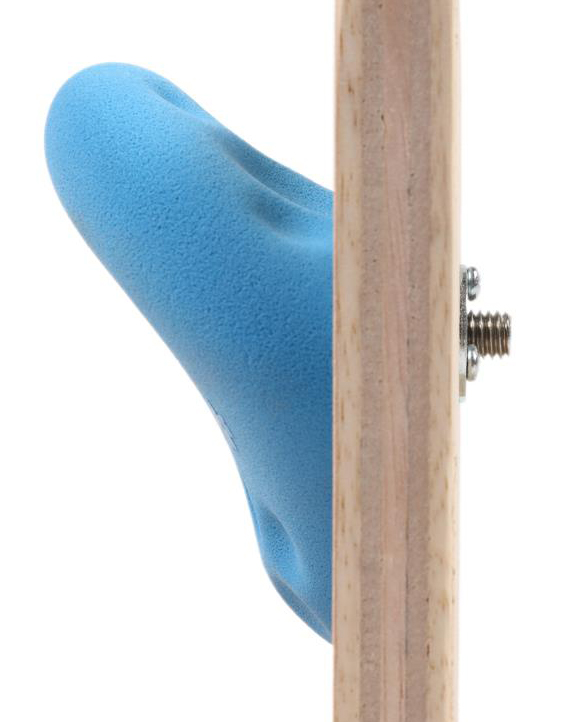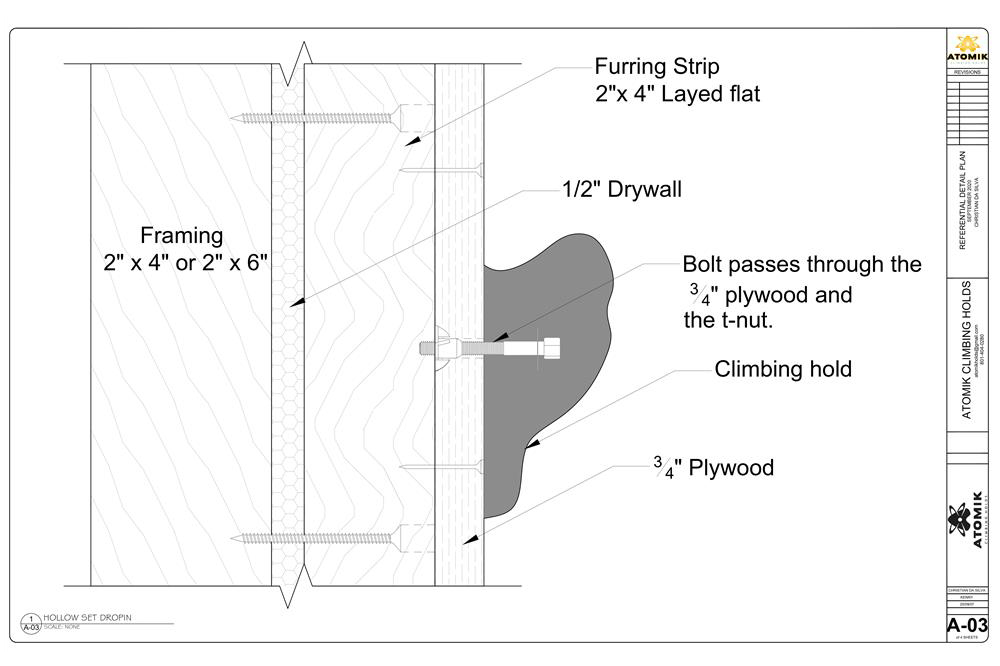Different Lengths of Bolts and Why
DIFFERENT LENGTHS OF BOLTS AND WHY
Climbing holds vary widely in size. Every hold has different measurements, including the thickness of the climbing hold behind the embedded washer where the bolt passes. Holds are designed to have the head of the bolt as near the face of the hold as possible without protruding on the front of the grip because you would feel it when grabbing the hold. The more material we can get between the washer and the back of the grip increases strength.
The thicknesses of the climbing hold we are dealing with are rarely the same. Even within the same pack, bolt lengths can vary. This is especially true in bulk packs that contain a variety of sizes from extra small to extra-large.
An example of a common issue: You have a climbing hold with 1" of material behind the washer to the back of the hold. The wall is the standard 3/4" plywood. That means you would hypothetically need a 1-3/4" bolt to engage all the threads in the T-nut for the most strength. Climbing holds exert an immense load on the bolt/T-nut combination. Anything less than full-thread engagement can shear off the threads inside the T-nut, ripping the hold and the bolt off the wall. That is a dangerous and zero-fun scenario.
This image illustrates the scenario we just described:
 | The correct length of bolt for this example is a 2" bolt.
|



